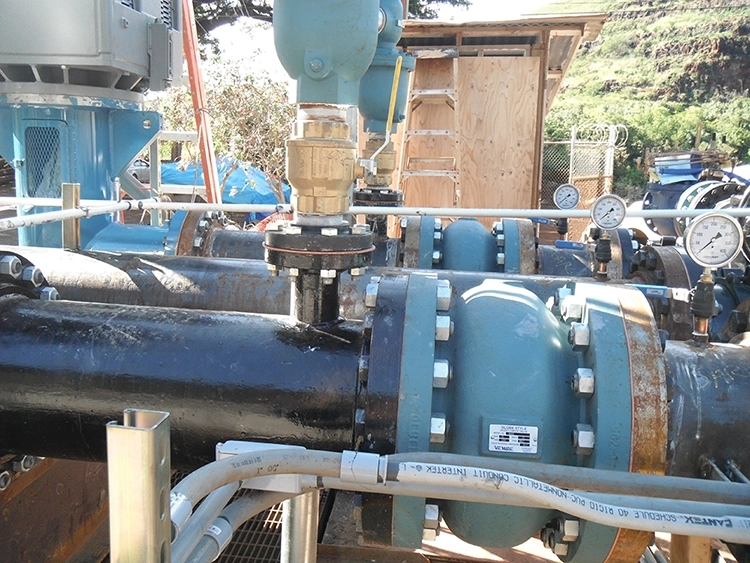
Check valves are an important component of any lift station design. Without check valves, the pumps and wet well of a lift station can be subject to damage from backflow. Backflow occurs when the lift station pumps stop operating and the water in the force main and discharge piping flows back into the wet well. In virtually every case, the backflow creates high levels of hydraulic pressure that pumps and wet wells are not designed to handle. The solution is a check valve. This simple device is available in several models and configurations and each variety can impact the design and cost of a lift station system.
The most common valves that Romtec Utilities specifies are ball check valves, swing check valves, and duckbill valves, but certain applications require valves like stop check valves, lift check valves, globe check valves, and disc check valves. Each valve type has qualities that are better or preferable to another type, but generally, the biggest factors in selecting a check valve are the presence of other valves or meters, the size of the piping, and the amount of back pressure in the force main. These aspects of the lift station design in turn affect the check valve configuration in the pumping system.
If the system requires operation valves, flow metering, or access ports, the most economical configuration will place the check valves in a valve or meter vault with the other components. This configuration also provides the most flexibility in specifying a type of valve. Some of the valve types can only operate effectively in a horizontal position, which is how a typical valve vault would be designed.
If there are no operation valves or other components, the check valves can be located inside the wet well in the discharge piping. This approach requires less time and money than a valve vault, but the type of check valve must be able to operate vertically oriented. The check valves cannot typically be located inside of the wet well in scenarios where the discharge piping is larger than 10 inches in diameter because of the limited amount of space available.
Check valves can also be located in the discharge elbows in the wet well. These types of elbows commonly use ball check valves. Generally, these types of check valves are used on smaller systems because the elbows are located at the bottom of the wet well. Even on a system that includes a valve or meter vault, this check valve type might be used to decrease the size of the vault.
Check valves improve the long-term functionality of a lift station system. Providing a wide range of types and configurations for check valves in a lift station design gives Romtec Utilities customers the best practices for protecting their lift station components in a cost-effective manner. You can read more about valve assembly here.
